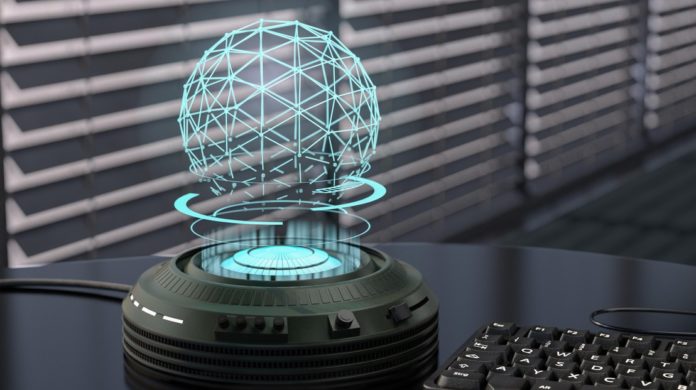Holography relies on the interference between a known reference and a signal of interest to reconstruct both the amplitude and the phase of that signal. With electrons, the extension of holography to the ultrafast time domain remains a challenge, although it would yield the highest possible combined spatiotemporal resolution.
The spatial resolution of the photo/hologram is limited by the wavelength of light, around or just-below 1 μm (0.001 mm). It is okay for macroscopic objects, but it fails when entering the realm of nanotechnology.
But, thanks to the new method, it is possible to obtain holograms of local electromagnetic fields with combined attosecond/nanometer resolution in an ultrafast transmission electron microscope (UEM). The method is developed by EPFL in collaboration with the University of Glasgow, Barcelona Institute of Science and Technology, ICREA-Institució Catalana de Recerca I Estudis Avançats and ETH Zürich.
For this, scientists used the most unusual photographic media: freely propagating electrons. Generally used in the ultrafast electron microscope, it is possible to encode quantum information in a holographic light pattern trapped in a nanostructure and is based on an exotic aspect of electron and light interaction.
Scientists then used the quantum nature of the electron-light interaction to separate the electron-reference and electron-imaging beams in energy instead of space. This makes it possible to use light pulses to encrypt information on the electron wave function, which can be mapped with ultra-fast transmission electron microscopy.
The new method can provide us with two important benefits: First, information on the light itself, making it a powerful tool for imaging electromagnetic fields with attosecond and nanometer precision in time and space. Second, the method can be used in quantum computing applications to manipulate the quantum properties of free electrons.
Fabrizio Carbone from EPFL said, “Conventional holography can extract 3D information by measuring the difference in distance that light travels from different parts of the object. But this needs an additional reference beam from a different direction to measure the interference between the two. The concept is the same with electrons, but we can now get higher spatial resolution due to their much shorter wavelength. For example, we were able to record holographic movies of quickly moving objects by using ultrashort electron pulses to form the holograms.”
“Beyond quantum computations, the technique has the highest spatial resolution compared to alternatives and could shift the way we think about light in everyday life. So far, science and technology have been limited to freely propagating photons, used in macroscopic optical devices. Our new technique allows us to see what happens with light at the nanoscale, the first step for miniaturization and integration of light devices onto integrated circuits.”
Journal Reference:
- I. Madan, G. M Vanacore, E. Pomarico et al. Holographic imaging of electromagnetic fields via electron-light quantum interference. Science Advances. DOI: 10.1126/sciadv.aav8358
